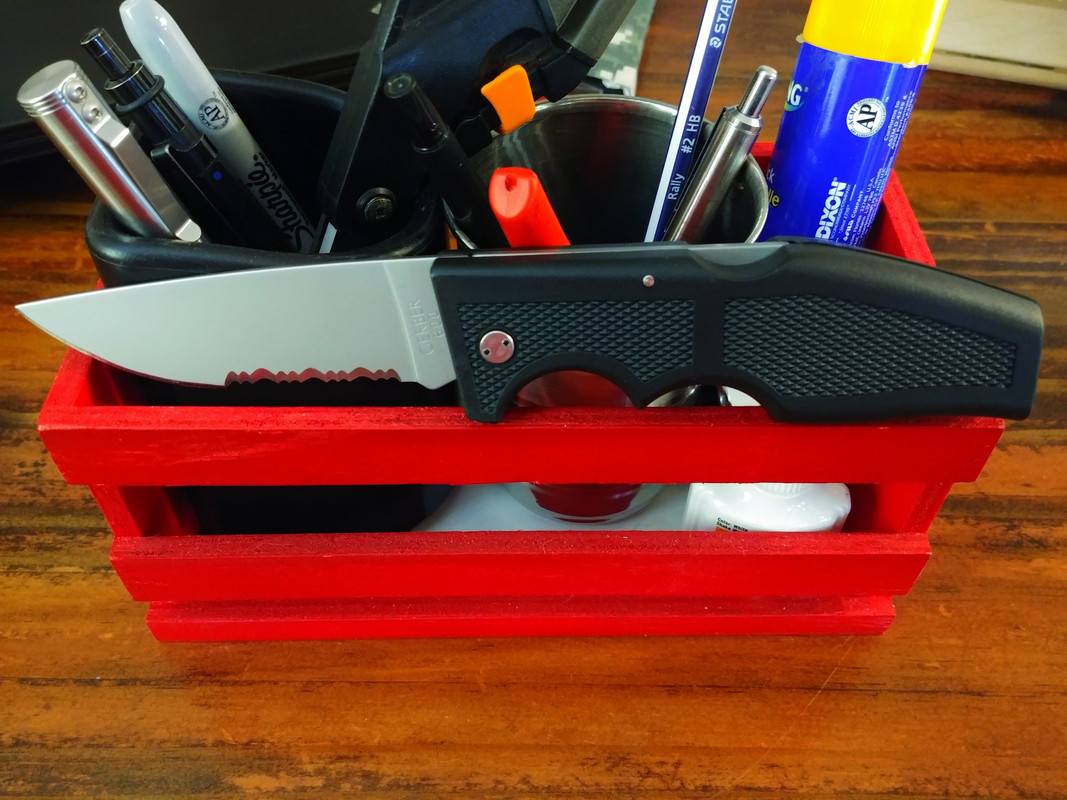Other than the Sodbuster I believe everyone of those is discontinued, Starting at the top and and goin' clockwise ...
Cold Steel Twistmaster, (essentially a giant FRN Opinel) in their superb Carbon V, this stuff takes an amazing edge that can't be beat, put a Moran edge on it and you can chop trees, process deer and still shave with it when you're done.

, directly below that another CS idea that was ahead of it's time, the Ultralock, it had an adjustable liner lock with more surface area available for contact. Next is the FRN version of the Benchmade/Carrcci AFCK the Ascent, to the right of that the David Boye Prophet with FRN molded handle wrapping a Boye Dendritic steel blade. Under that is a Sears Craftsman Camp/Utility/Scout knife in sawcut delrin IIRC made under contract by Camillus/Schrade/Buck (it was at that time when a knife made for someone else would have been contracted to either of those companies at the time as they all had versions of the same knife.
@ 6 o'clock there's another Gerber innovation the Gerber Bolt Lock also in FRN boy that stuff was popular in the 80s-90s

. Th the left of that the Gerber big boy the Magnum LST (Light, Strong, Tough). Above that areal rarity, the SOG Mini Autoclip in the super steel of the day, the one used in the best customs and by the early Sebenzas, BG42. You rarely ever find it in production knives. Above the SOG is the old 1980s Buck work horse the 426 aka Bucklite. To the left of that the Timberline TM10310 Timberlite, with the unique NEELEY LOCK where you pulled the blade out of the handle to unlock and close the knife and the last one is the Case Sodbuster in a black plastic compound.













